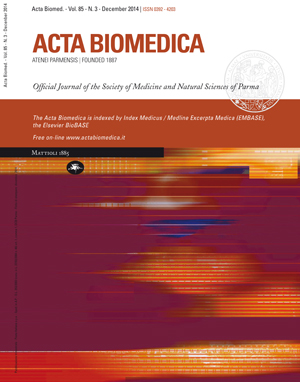Therapeutic approach to “diabetic foot” complications
Keywords:
diabetes mellitus, diabetic foot, diabetic ulcer, charcot foot, wound healingAbstract
The series of ulcers of the lower extremities known as “diabetic foot” is a common complication of diabetes and the chief cause of admission to hospital. The causes may be numerous but the main ones are distal symmetric neuropathy and peripheral obliterative arteriopathy, often complicated by infection. In this review, the Authors, after having illustrated the main pathophysiological aspects of the diabetic foot, describe the clinical characteristics of the disease, focusing particularly on the risk of suprainfection and vascular problems. The clinical and therapeutic approach to diabetic foot is also investigated with particular reference to the antibiotic treatment of infections and the treatment of peripheral arterial disease. Poor tissue repair, persistent inflammation, the presence of deep abscesses, osteomyelitis and systemic involvement can lead to a very serious clinical picture of gangrene or necrosis, which is initially localised but which can extend widely, requiring minor or major amputation surgery, in order to radically remove the infected tissue. In conclusion, space for discussion is given to the rationale of hyperbaric oxygen therapy, negative pressure wound therapy and other advanced therapies that involve the use of dermoepidermal equivalents and skin substitutes in addition to gels made of platelet-derived growth factors and the epidermal growth factor. Nonetheless, prevention is, of course, of fundamental importance, based on an intensive treat-to-target approach for the treatment of diabetes, on regular examinations of the feet, on the stratification of risk and education of the patient, which has proved successful in reducing the onset of foot lesions in at least 50% of patients.Downloads
Published
Issue
Section
License
This is an Open Access article distributed under the terms of the Creative Commons Attribution License (https://creativecommons.org/licenses/by-nc/4.0) which permits unrestricted use, distribution, and reproduction in any medium, provided the original work is properly cited.
Transfer of Copyright and Permission to Reproduce Parts of Published Papers.
Authors retain the copyright for their published work. No formal permission will be required to reproduce parts (tables or illustrations) of published papers, provided the source is quoted appropriately and reproduction has no commercial intent. Reproductions with commercial intent will require written permission and payment of royalties.



